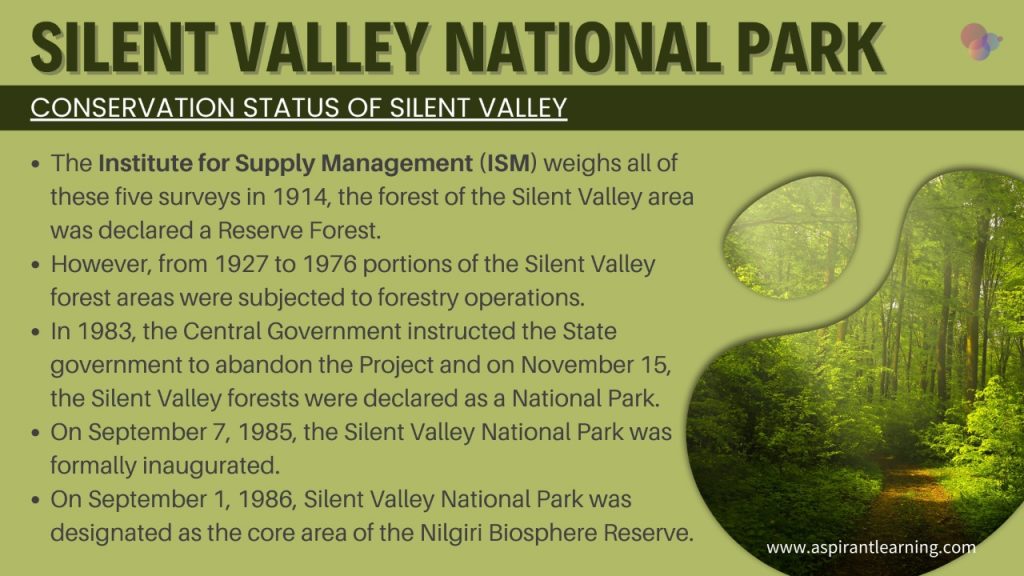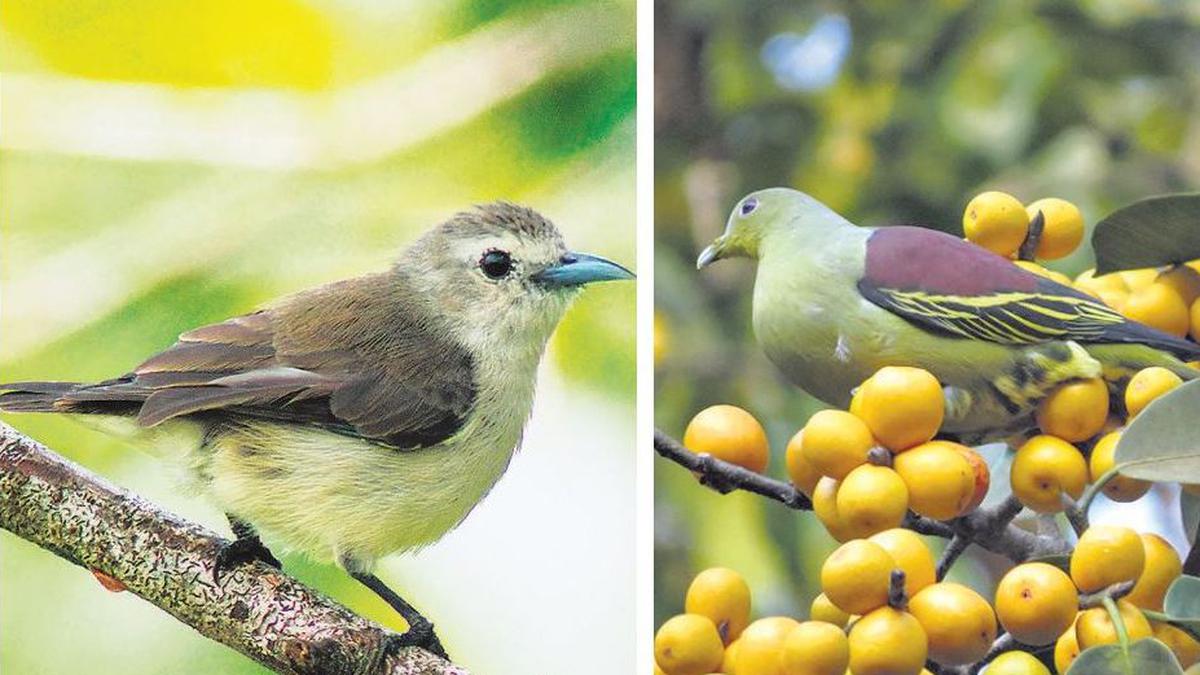News Highlight
The bird survey on December 27, 28 and 29 marked the 30th anniversary of the first bird survey in Silent Valley.
Key Takeaway
- A bird survey at the Silent Valley National Park in the last week of December identified 141 species, of which 17 were new.
- So far, 175 species of birds have been spotted in Silent Valley.
- The survey on December 27, 28 and 29 marked the 30th anniversary of the first bird survey in Silent Valley.
- Although the first survey was held in the last week of December 1990, the anniversary could not be celebrated in December 2020 because of COVID-19 restrictions.
Silent Valley National Park
- About
- It is situated on the boundary of the Nilambur Taluk in Kerala’s Malappuram District and the Mannarkkad Taluk in Palakkad District.
- There are some endangered plant and animal species in this national park.
- Botanist Robert Wight visited this region in 1847.
- It is situated in the Nilgiri Biosphere Reserve, which has a diverse biodiversity.
- It is close to Anginda peak and Mukurthi peak, the fifth-highest peak in South India.
- The Kunthipuzha River and Bhavani River, tributaries of the Bharathappuzha River, have their origins close to Silent Valley.
- In Silent Valley, the Kadalundi River also has its beginning.
- History
- The British termed the area ‘Silent Valley‘ due to the lack of noisy Cicadas.
- A significant river, the Kuntipuzha, travels 15 kilometres southwest of Silent Valley.
- It takes its origin in the lush green forests of Silent Valley.
- The Kunthipuzha River in Sairandhri was chosen as the optimal site for energy production in 1928.
- The British government initially decided to construct a dam across the river, which rises in the forest.
- The Kerala State Electricity Board undertook a study and surveillance of the area in 1958, and a hydroelectric project was suggested.
Significance of Silent Valley
- Numerous endangered bird and animal species can be found in the valley.
- Birdlife International recognised 16 species as threatened or restricted in Silent Valley.
- The largest of all wild cattle, the gaur, is one of the creatures found in the valley.
- In addition, Silent Valley is home to at least 34 mammal species, some of which are endangered.
- Here, 400 kinds of moths and more than 128 species of butterflies can be found.
- Silent Valley is identified as a region with high biodiversity and an important Gene Pool resource for Recombinant DNA innovations by the Indian Council of Agricultural Research, ICAR (India).
The climate of Silent Valley
- Firstly, there are substantial contrasts in climate from the plains to the Ghats, where the hills are drier and colder, and the lowlands are wet and hot.
- From April to September, the prevailing winds are from the west and southwest, whereas from October to March, they are from the east.
- Additionally, in April and May, there are infrequent thunderstorms.
- Both the southwest and northeast monsoons bring precipitation to this region.
- The southwest monsoon, which begins in the first week of June, accounts for most of the precipitation.
- Furthermore, the heaviest precipitation occurs in June, July, and August.

New species spotted
- Brown wood owls, Banded bay cuckoo, Malabar wood shrike, White-throated kingfisher, Indian nightjar, Jungle nightjar, and Large cuckoo shrike were among the 17 species newly identified in the Silent Valley.
Ecological Importance of Silent Valley
- The Western Ghats include one of the world’s most diverse and unknown ecosystems.
- In addition, the forests of Silent Valley National Park are among the purest, most distinctive, and most prolific in the world.
- In a biogeographical sense, Silent Valley National Park and the surrounding woodlands are ‘Ecological islands’ where circumstances existed before human activity existed.
- Here, the species diversity and endemism of evergreen and semi-evergreen communities are exceptional.
Pic Courtesy: The Hindu
Content Source: The Hindu



